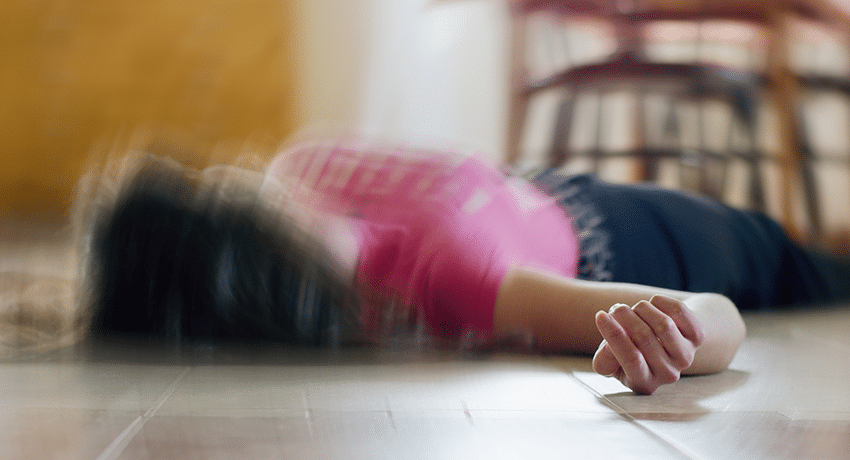
Parents who see their child having a seizure for the first time are afraid their child is dying, said Gretchen K. Von Allmen, MD, pediatric epileptologist and neurologist with UT Physicians Pediatric Specialists – Texas Medical Center. It’s certainly a natural thought that any bystander might think watching someone in that moment. The body, during a tonic-clonic seizure (formerly known as grand mal), stiffens with uncontrollable shaking, and they lose awareness and control over their body – for sometimes a minute or two.
Seizures are fairly common with an estimated 10% experiencing one seizure in their life.
“These things happen, and if you know first aid for seizures, that’s going to be important,” said Von Allmen, chief of the Division of Child and Adolescent Neurology, Department of Pediatrics, at McGovern Medical School at UTHealth Houston.
Seizure safety 101: Let seizures take their course
What not to do? The main thing people can do wrong when they see a seizure in action is to intervene too much, Von Allmen said. She emphasizes the importance of letting the seizure take its course and protecting the person from anything that could happen to them, because they’re not conscious.
“It can be really terrifying because the body is doing things that aren’t under the control of the brain – or at least conscious control,” said Von Allmen, professor and Jacobo Geissler Distinguished Chair in West Syndrome Research. “These changes might be in the way they are breathing, and sometimes the face changes colors to red or bluish, because they’re not having normal circulation.”
There are important seizure safety tips to consider during a seizure:
- Make sure they are in a safe location. Move them to the ground, if needed.
- Put them on their side. This allows anything in their mouth to come out (including saliva or drool) and helps keep the airway open.
- Cushion their head.
- Do not put anything in their mouth, including your fingers.
- Be comforting and reassuring to them, in case they can hear you.
“Basically, you allow the seizure to finish on its own,” Von Allmen said. “Most seizures will finish between a minute to a minute-and-a-half when the brain shuts it down.”
After the seizure, Von Allmen said it’s OK for the individual to sleep as long as their body is relaxed and their eyes are closed. You can usually assume the seizure is over, and give them time to recover since they’ve used a lot of energy and their muscles have been tense.
Causes of seizures
Seizures not related to epilepsy can occur for a number of reasons, due to anything that disrupts how the brain normally functions. Von Allmen mentioned several causes of seizures that are considered provoked seizures, with some underlying reason that it happened:
A metabolic problem can trigger a seizure if sodium levels are too high or low. Runners who drink lots of water can dilute levels of sodium in the blood, which alters body chemistry.
People who get hot and dehydrated can have a seizure.
Blood sugars that get too high or low can also result in the brain having a seizure.
A slow-growing brain tumor can trigger a pathway, and the person will start to have seizures.
People with epilepsy have an increased risk of unprovoked seizures. Fever can sometimes trigger seizures to occur. Some people with epilepsy also have other brain-related issues, but many do not.
Releasing the stigma regarding epilepsy
People living with epilepsy experience daily challenges and a frequent social stigma. Von Allmen stressed the importance of creating more awareness around epilepsy as something that happens to people. It doesn’t mean there is anything wrong with them, she said, other than they have a risk of having these unexpected events where they can’t control their body.
“People who have epilepsy want to have social lives, relationships, go to school and work, participate in sports, and do all the things that make your quality of life good,” Von Allmen said. “I think it’s important to combat the stigma and the thinking that people with epilepsy are different from those without epilepsy.”
For more information about seizures and seizure first aid training, the Epilepsy Foundation offers a free 30-minute on-demand course titled Seizure First Aid Ready.



